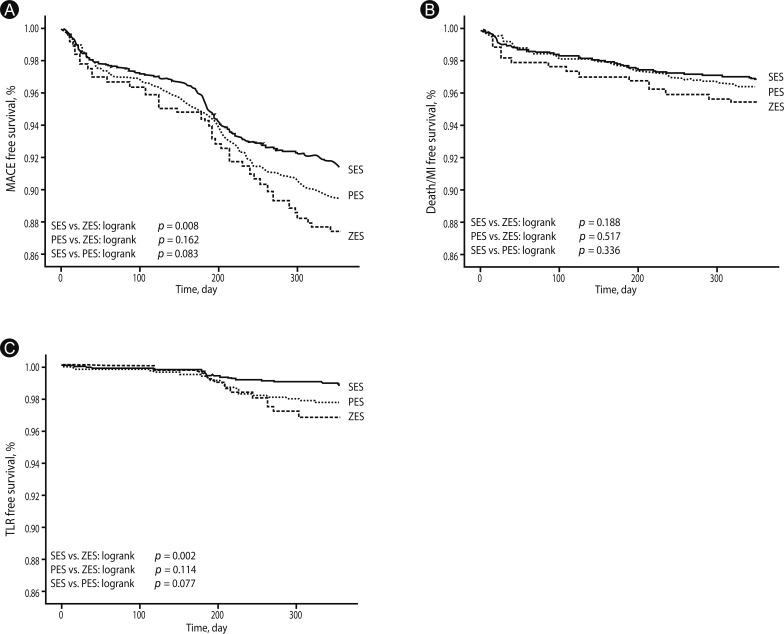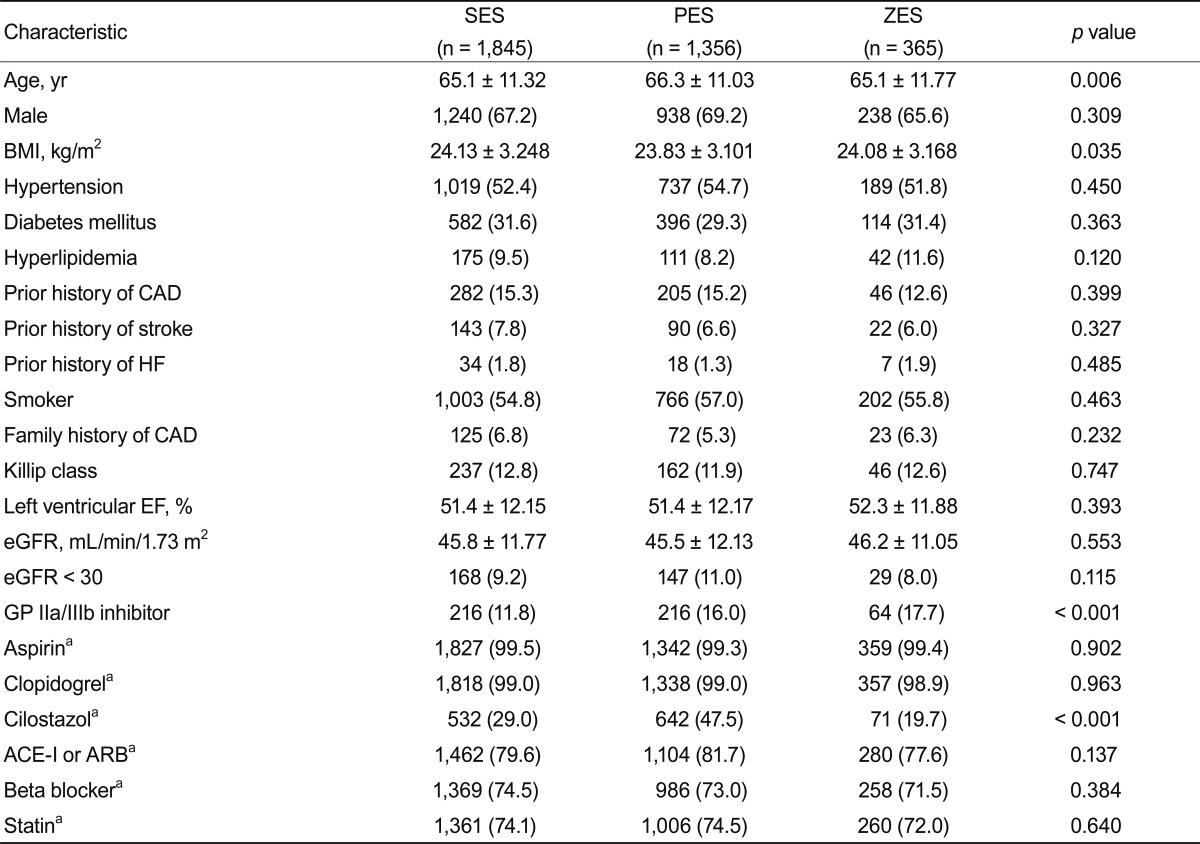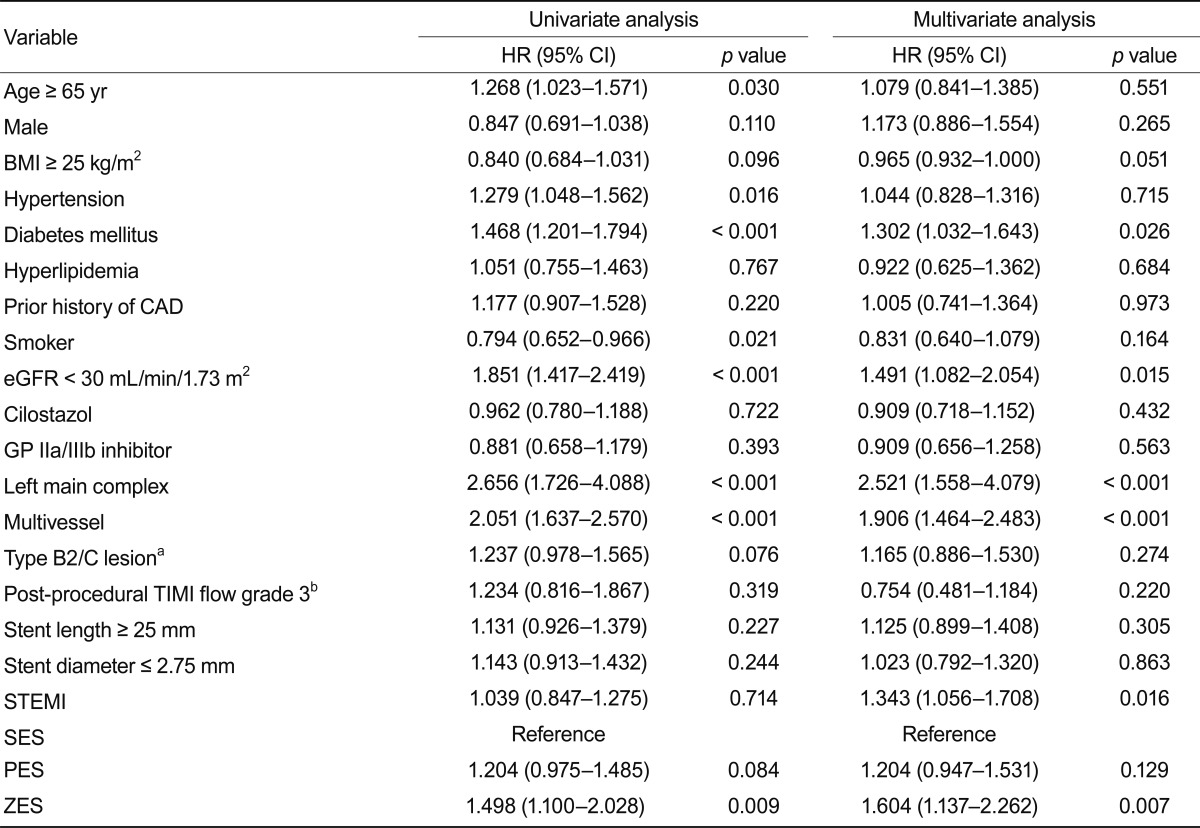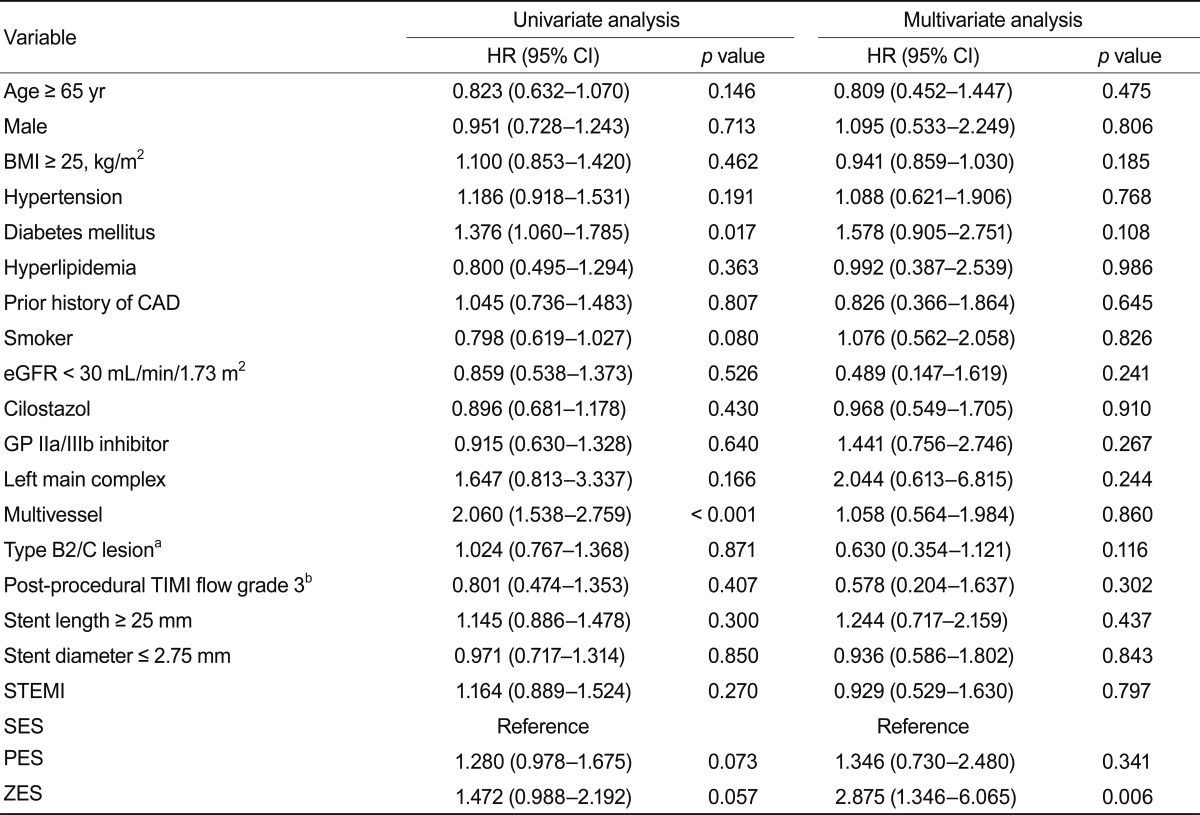1. Keeley EC, Boura JA, Grines CL. Primary angioplasty versus intravenous thrombolytic therapy for acute myocardial infarction: a quantitative review of 23 randomised trials. Lancet 2003;361:13ŌĆō20PMID : 12517460.


2. Newell MC, Henry CR, Sigakis CJ, et al. Comparison of safety and efficacy of sirolimus-eluting stents versus bare metal stents in patients with ST-segment elevation myocardial infarction. Am J Cardiol 2006;97:1299ŌĆō1302PMID : 16635599.


3. Lemos PA, Saia F, Hofma SH, et al. Short- and long-term clinical benefit of sirolimus-eluting stents compared to conventional bare stents for patients with acute myocardial infarction. J Am Coll Cardiol 2004;43:704ŌĆō708PMID : 14975486.


4. Valgimigli M, Percoco G, Malagutti P, et al. Tirofiban and sirolimus-eluting stent vs abciximab and bare-metal stent for acute myocardial infarction: a randomized trial. JAMA 2005;293:2109ŌĆō2117PMID : 15870414.


5. Nakazawa G, Finn AV, Joner M, et al. Delayed arterial healing and increased late stent thrombosis at culprit sites after drug-eluting stent placement for acute myocardial infarction patients: an autopsy study. Circulation 2008;118:1138ŌĆō1145PMID : 18725485.


6. Kandzari DE. Development and performance of the zotarolimus-eluting Endeavor coronary stent. Expert Rev Med Devices 2010;7:449ŌĆō459PMID : 20583882.


7. Hamilos M, Sarma J, Ostojic M, et al. Interference of drug-eluting stents with endothelium-dependent coronary vasomotion: evidence for device-specific responses. Circ Cardiovasc Interv 2008;1:193ŌĆō200PMID : 20031678.


8. Nakazawa G, Finn AV, John MC, Kolodgie FD, Virmani R. The significance of preclinical evaluation of sirolimus-, paclitaxel-, and zotarolimus-eluting stents. Am J Cardiol 2007;100(8B):36MŌĆō44M.

9. Foley RN, Murray AM, Li S, et al. Chronic kidney disease and the risk for cardiovascular disease, renal replacement, and death in the United States Medicare population, 1998 to 1999. J Am Soc Nephrol 2005;16:489ŌĆō495PMID : 15590763.


10. Anavekar NS, McMurray JJ, Velazquez EJ, et al. Relation between renal dysfunction and cardiovascular outcomes after myocardial infarction. N Engl J Med 2004;351:1285ŌĆō1295PMID : 15385655.


11. Halkin A, Mehran R, Casey CW, et al. Impact of moderate renal insufficiency on restenosis and adverse clinical events after paclitaxel-eluting and bare metal stent implantation: results from the TAXUS-IV Trial. Am Heart J 2005;150:1163ŌĆō1170PMID : 16338253.


12. Jeong YH, Hong MK, Lee CW, et al. Impact of significant chronic kidney disease on long-term clinical outcomes after drug-eluting stent versus bare metal stent implantation. Int J Cardiol 2008;125:36ŌĆō40PMID : 17521753.


13. Ong AT, Serruys PW, Aoki J, et al. The unrestricted use of paclitaxel- versus sirolimus-eluting stents for coronary artery disease in an unselected population: one-year results of the Taxus-Stent Evaluated at Rotterdam Cardiology Hospital (T-SEARCH) registry. J Am Coll Cardiol 2005;45:1135ŌĆō1141PMID : 15808774.


14. Windecker S, Remondino A, Eberli FR, et al. Sirolimus-eluting and paclitaxel-eluting stents for coronary revascularization. N Engl J Med 2005;353:653ŌĆō662PMID : 16105989.


16. Sim DS, Jeong MH, Kang JC. Current management of acute myocardial infarction: experience from the Korea Acute Myocardial Infarction Registry. J Cardiol 2010;56:1ŌĆō7PMID : 20554156.


17. National Kidney Foundation. K/DOQI clinical practice guidelines for chronic kidney disease: evaluation, classification, and stratification. Am J Kidney Dis 2002;39(2 Suppl 1):S1ŌĆōS266PMID : 11904577.

18. Ellis SG, Vandormael MG, Cowley MJ, et al. Multivessel Angioplasty Prognosis Study Group. Coronary morphologic and clinical determinants of procedural outcome with angioplasty for multivessel coronary disease: implications for patient selection. Circulation 1990;82:1193ŌĆō1202PMID : 2401060.


19. TIMI Study Group. The thrombolysis in myocardial infarction (TIMI) trial: phase I findings. N Engl J Med 1985;312:932ŌĆō936PMID : 4038784.


20. Gruberg L, Dangas G, Mehran R, et al. Clinical outcome following percutaneous coronary interventions in patients with chronic renal failure. Catheter Cardiovasc Interv 2002;55:66ŌĆō72PMID : 11793497.


21. Lee CW, Park DW, Lee SH, et al. Comparison of the efficacy and safety of zotarolimus-, sirolimus-, and paclitaxel-eluting stents in patients with ST-elevation myocardial infarction. Am J Cardiol 2009;104:1370ŌĆō1376PMID : 19892052.


22. Park KW, Lim WH, Kim JH, et al. Comparison between zotarolimus-eluting stents and first generation drug-eluting stents in the treatment of patients with acute ST-segment elevation myocardial infarction. Int J Cardiol 2011;11. 05. [Epub].
http://dx.doi.org/10.1016/j.ijcard.2011.10.012.

23. Kang WC, Ahn T, Lee K, et al. Comparison of zotarolimus-eluting stents versus sirolimus-eluting stents versus paclitaxel-eluting stents for primary percutaneous coronary intervention in patients with ST-elevation myocardial infarction: results from the Korean Multicentre Endeavor (KOMER) acute myocardial infarction (AMI) trial. EuroIntervention 2011;7:936ŌĆō943PMID : 21959255.


24. Camenzind E, Steg PG, Wijns W. Stent thrombosis late after implantation of first-generation drug-eluting stents: a cause for concern. Circulation 2007;115:1440ŌĆō1455PMID : 17344324.


25. Daemen J, Wenaweser P, Tsuchida K, et al. Early and late coronary stent thrombosis of sirolimus-eluting and paclitaxel-eluting stents in routine clinical practice: data from a large two-institutional cohort study. Lancet 2007;369:667ŌĆō678PMID : 17321312.














 PDF Links
PDF Links PubReader
PubReader ePub Link
ePub Link Full text via DOI
Full text via DOI Download Citation
Download Citation Print
Print



